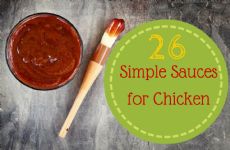|
Added salt from the shaker has been a pet peeve of mine since beginning dietitian training in college. I used to go home for a visit and chastise my father as he added salt to his bologna sandwich or lettuce salads before ever tasting them. "Dad, salt is an acquired taste," I would tell him. "Leave the shaker alone for two weeks, and you will be amazed at how your tastes will change related to salty foods." My mother was always grateful for the interventions I attempted. My father would humor me with the nod of his head in agreement while smirking to indicate he did not intend to take my advice. Offering the same advice to put away the salt shaker in favor of other flavorful seasoning alternatives while working at the hospital brought some of the same responses. The spouse was glad for the backup while the client would nod in agreement in a way that let me know change was not likely. It was always refreshing to see the occasional client who faced a new change in medical status take the advice to heart. A few weeks ago, I was excited to read that Boston Market was taking a bold move and removing salt shakers from restaurant tables. Boston Market received a small backlash from some crying "nanny creep" after their recent announcement they would be reducing sodium in several popular items and removing salt shakers from restaurant tables. Although the company's chief brand officer acknowledges that Boston Market will likely not become a healthy fast-casual chain, the chief executive officer believes the bold steps of removing the shakers are helpful in reducing the temptation of salting food before tasting it. Instead of finding a salt shaker, patrons will find a placard next to the pepper informing them that salt shakers are still available but located at the beverage station. In addition to removing the salt shakers from the table, Boston market aims to reduce sodium by 20 percent in three favorite recipes over the next six months. Planned sodium reductions include: A serving of rotisserie chicken (quarter white meat) will reduce from 710 mg to 568 mg. A serving of macaroni and cheese will reduce from 1,100 mg to 880 mg. A serving of mashed potatoes will decrease from 820 mg to 607 mg. This means that while the same serving size dinner of Rotisserie Chicken with a side of macaroni and cheese and mashed potatoes (we can discuss the meal planning negatives of this selection on another blog!) would be reduced by 362 mg of sodium, the meal still contains 2,055 mg. (For reference, SparkPeople recommends no more than 2,300 mg sodium, or one teaspoon of salt, daily.) Table salt (aka sodium chloride) is approximately 40 percent sodium. Here is how that breaks down. 1/4 teaspoon salt = 600 mg sodium 1/2 teaspoon salt = 1,200 mg sodium 3/4 teaspoon salt = 1,800 mg sodium 1 teaspoon salt = 2,300 mg sodium Estimates suggest that Americans consume an average of 3,400 milligrams or more of sodium per day--that's almost 50% more than we recommends, and more than twice what the American Heart Association recommends (they suggest less than 1,500 mg of sodium a day). Most sodium in the diet comes from packaged and processed foods. However, for those who regularly use a salt shaker, the simple step of removing it from the table is the best first step toward reducing sodium intake. Since not having the shaker within easy arm reach helps people think before they shake, I applaud Boston Market for this small but effective step. For those that really must use it, it is available and the exercise in retrieving it will likely be beneficial. For those that like the salt shaker, what are some good alternatives to put in the salt shaker instead of salt? |
Related Entries
More From SparkPeople
|

.jpg)










.png)










